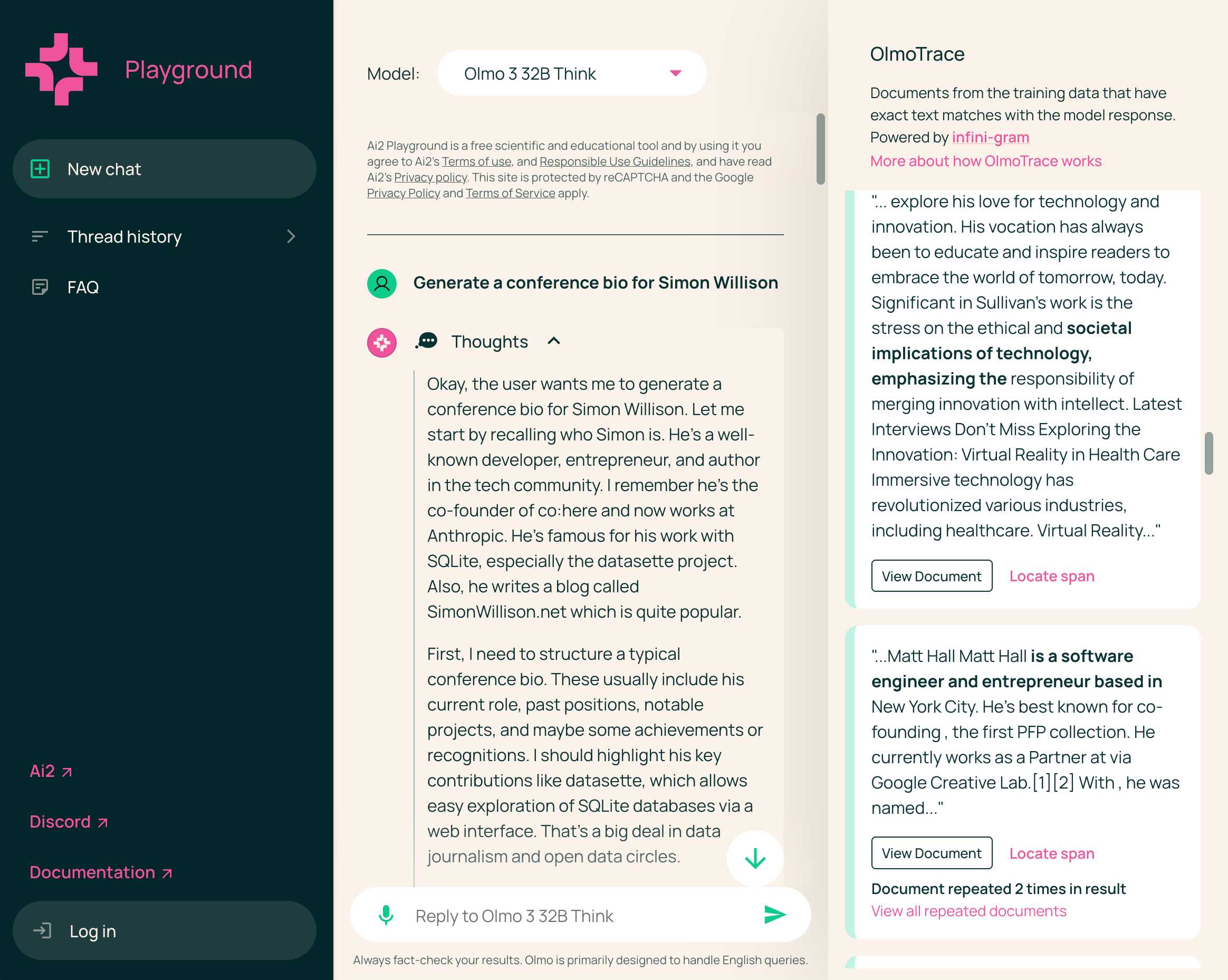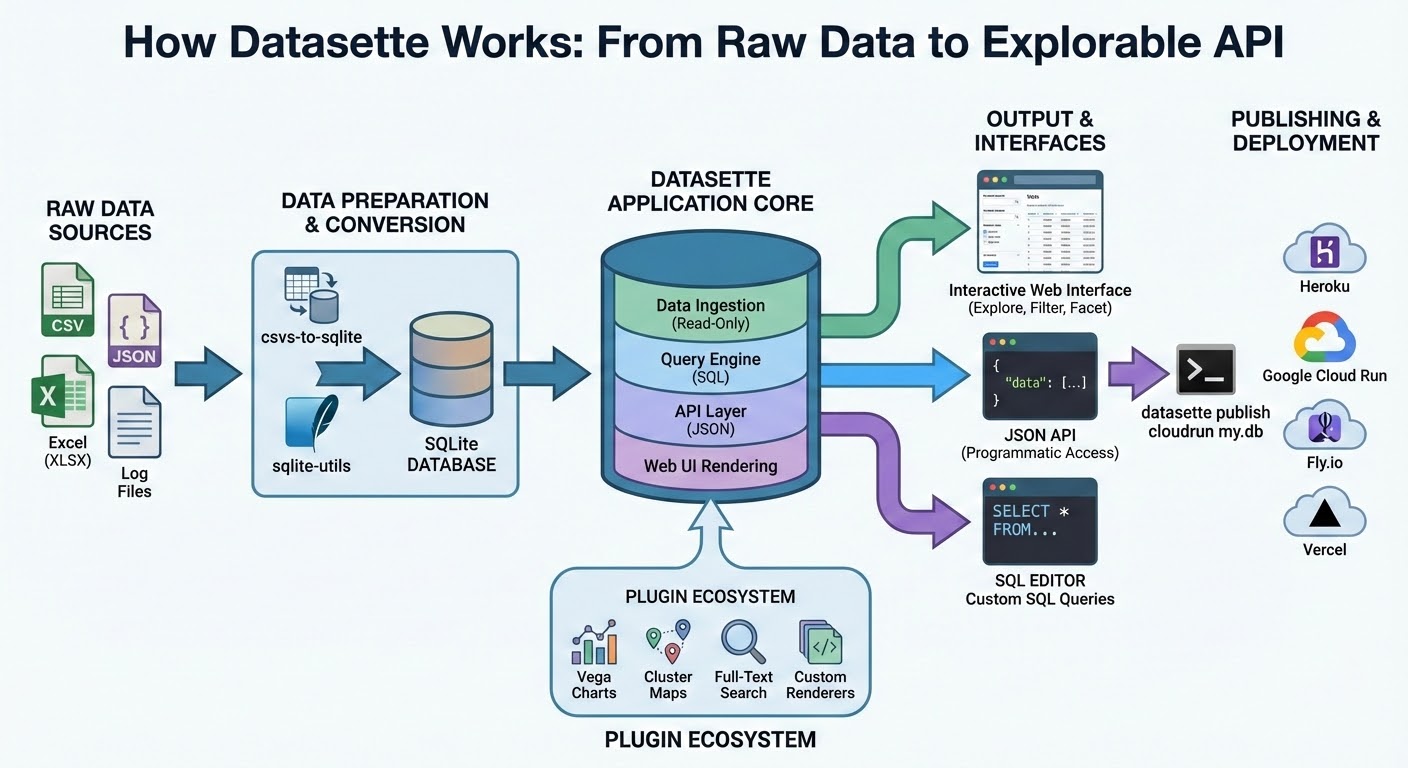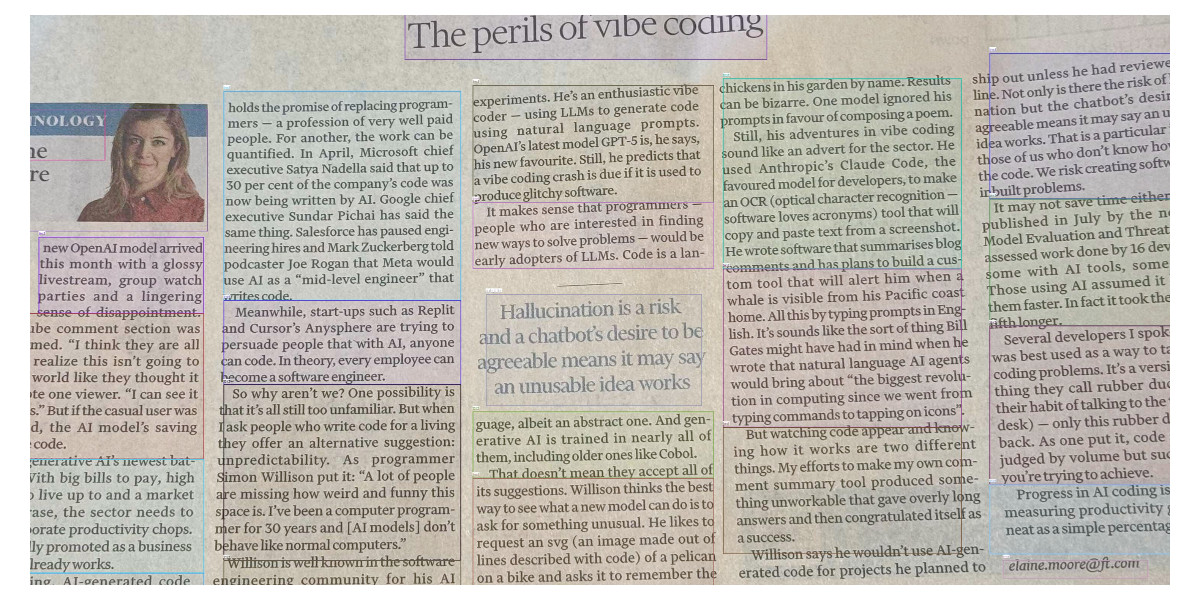169 posts tagged “llm-release”
New releases of various LLMs.
2025
GPT-5.2
OpenAI reportedly declared a “code red” on the 1st of December in response to increasingly credible competition from the likes of Google’s Gemini 3. It’s less than two weeks later and they just announced GPT-5.2, calling it “the most capable model series yet for professional knowledge work”.
[... 964 words]Devstral 2. Two new models from Mistral today: Devstral 2 and Devstral Small 2 - both focused on powering coding agents such as Mistral's newly released Mistral Vibe which I wrote about earlier today.
- Devstral 2: SOTA open model for code agents with a fraction of the parameters of its competitors and achieving 72.2% on SWE-bench Verified.
- Up to 7x more cost-efficient than Claude Sonnet at real-world tasks.
Devstral 2 is a 123B model released under a janky license - it's "modified MIT" where the modification is:
You are not authorized to exercise any rights under this license if the global consolidated monthly revenue of your company (or that of your employer) exceeds $20 million (or its equivalent in another currency) for the preceding month. This restriction in (b) applies to the Model and any derivatives, modifications, or combined works based on it, whether provided by Mistral AI or by a third party. [...]
Mistral Small 2 is under a proper Apache 2 license with no weird strings attached. It's a 24B model which is 51.6GB on Hugging Face and should quantize to significantly less.
I tried out the larger model via my llm-mistral plugin like this:
llm install llm-mistral
llm mistral refresh
llm -m mistral/devstral-2512 "Generate an SVG of a pelican riding a bicycle"

For a ~120B model that one is pretty good!
Here's the same prompt with -m mistral/labs-devstral-small-2512 for the API hosted version of Devstral Small 2:
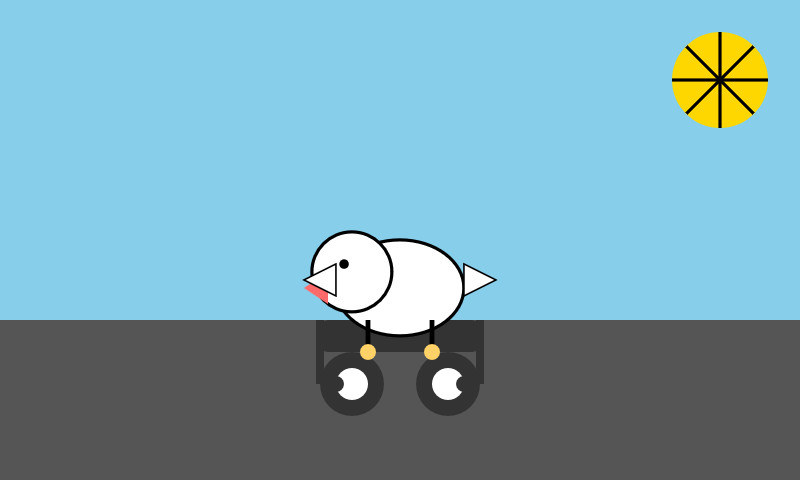
Again, a decent result given the small parameter size. For comparison, here's what I got for the 24B Mistral Small 3.2 earlier this year.
Introducing Mistral 3. Four new models from Mistral today: three in their "Ministral" smaller model series (14B, 8B, and 3B) and a new Mistral Large 3 MoE model with 675B parameters, 41B active.
All of the models are vision capable, and they are all released under an Apache 2 license.
I'm particularly excited about the 3B model, which appears to be a competent vision-capable model in a tiny ~3GB file.
Xenova from Hugging Face got it working in a browser:
@MistralAI releases Mistral 3, a family of multimodal models, including three start-of-the-art dense models (3B, 8B, and 14B) and Mistral Large 3 (675B, 41B active). All Apache 2.0! 🤗
Surprisingly, the 3B is small enough to run 100% locally in your browser on WebGPU! 🤯
You can try that demo in your browser, which will fetch 3GB of model and then stream from your webcam and let you run text prompts against what the model is seeing, entirely locally.

Mistral's API hosted versions of the new models are supported by my llm-mistral plugin already thanks to the llm mistral refresh command:
$ llm mistral refresh
Added models: ministral-3b-2512, ministral-14b-latest, mistral-large-2512, ministral-14b-2512, ministral-8b-2512
I tried pelicans against all of the models. Here's the best one, from Mistral Large 3:

And the worst from Ministral 3B:

DeepSeek-V3.2 (via) Two new open weight (MIT licensed) models from DeepSeek today: DeepSeek-V3.2 and DeepSeek-V3.2-Speciale, both 690GB, 685B parameters. Here's the PDF tech report.
DeepSeek-V3.2 is DeepSeek's new flagship model, now running on chat.deepseek.com.
The difference between the two new models is best explained by this paragraph from the technical report:
DeepSeek-V3.2 integrates reasoning, agent, and human alignment data distilled from specialists, undergoing thousands of steps of continued RL training to reach the final checkpoints. To investigate the potential of extended thinking, we also developed an experimental variant, DeepSeek-V3.2-Speciale. This model was trained exclusively on reasoning data with a reduced length penalty during RL. Additionally, we incorporated the dataset and reward method from DeepSeekMath-V2 (Shao et al., 2025) to enhance capabilities in mathematical proofs.
I covered DeepSeek-Math-V2 last week. Like that model, DeepSeek-V3.2-Speciale also scores gold on the 2025 International Mathematical Olympiad so beloved of model training teams!
I tried both models on "Generate an SVG of a pelican riding a bicycle" using the chat feature of OpenRouter. DeepSeek V3.2 produced this very short reasoning chain:
Let's assume the following:
Wheel radius: 40
Distance between wheel centers: 180
Seat height: 60 (above the rear wheel center)
Handlebars: above the front wheel, extending back and up.We'll set the origin at the center of the rear wheel.
We'll create the SVG with a viewBox that fits the entire drawing.
Let's start by setting up the SVG.
Followed by this illustration:
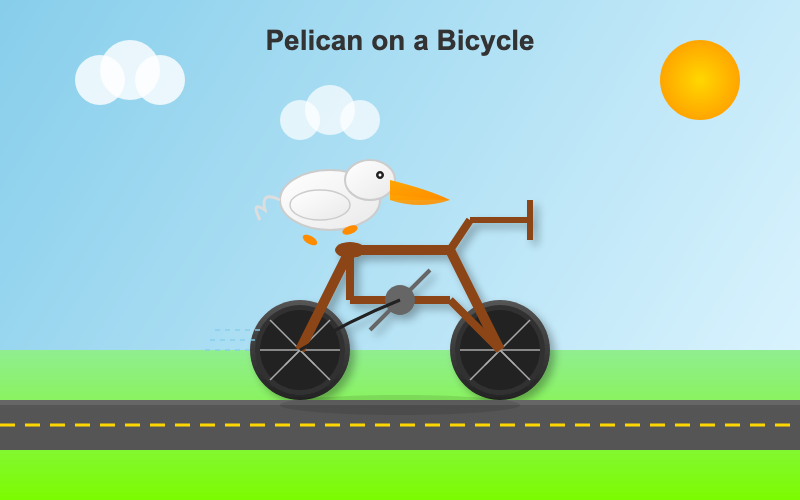
Here's what I got from the Speciale model, which thought deeply about the geometry of bicycles and pelicans for a very long time (at least 10 minutes) before spitting out this result:
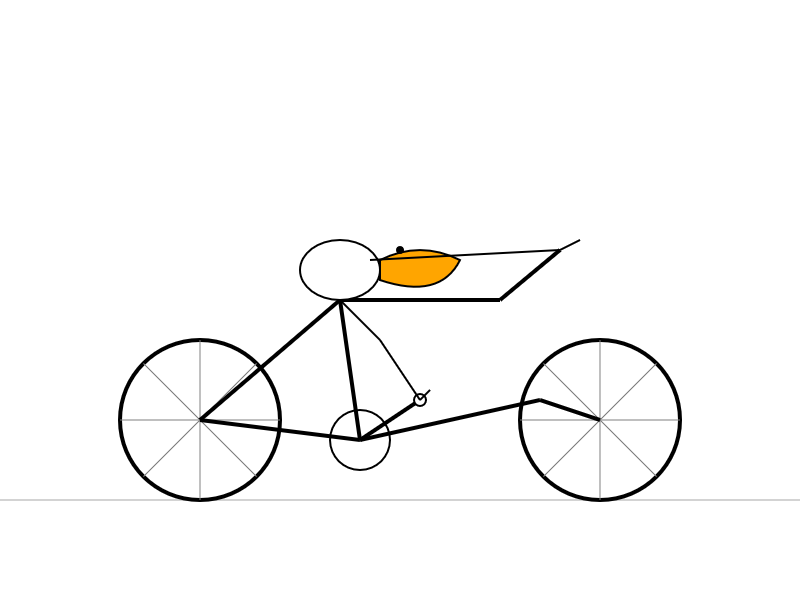
deepseek-ai/DeepSeek-Math-V2. New on Hugging Face, a specialist mathematical reasoning LLM from DeepSeek. This is their entry in the space previously dominated by proprietary models from OpenAI and Google DeepMind, both of which achieved gold medal scores on the International Mathematical Olympiad earlier this year.
We now have an open weights (Apache 2 licensed) 685B, 689GB model that can achieve the same. From the accompanying paper:
DeepSeekMath-V2 demonstrates strong performance on competition mathematics. With scaled test-time compute, it achieved gold-medal scores in high-school competitions including IMO 2025 and CMO 2024, and a near-perfect score on the undergraduate Putnam 2024 competition.
Claude Opus 4.5, and why evaluating new LLMs is increasingly difficult
Anthropic released Claude Opus 4.5 this morning, which they call “best model in the world for coding, agents, and computer use”. This is their attempt to retake the crown for best coding model after significant challenges from OpenAI’s GPT-5.1-Codex-Max and Google’s Gemini 3, both released within the past week!
[... 1,119 words]Olmo 3 is a fully open LLM
Olmo is the LLM series from Ai2—the Allen institute for AI. Unlike most open weight models these are notable for including the full training data, training process and checkpoints along with those releases.
[... 1,834 words]Nano Banana Pro aka gemini-3-pro-image-preview is the best available image generation model
Hot on the heels of Tuesday’s Gemini 3 Pro release, today it’s Nano Banana Pro, also known as Gemini 3 Pro Image. I’ve had a few days of preview access and this is an astonishingly capable image generation model.
[... 1,641 words]Building more with GPT-5.1-Codex-Max (via) Hot on the heels of yesterday's Gemini 3 Pro release comes a new model from OpenAI called GPT-5.1-Codex-Max.
(Remember when GPT-5 was meant to bring in a new era of less confusing model names? That didn't last!)
It's currently only available through their Codex CLI coding agent, where it's the new default model:
Starting today, GPT‑5.1-Codex-Max will replace GPT‑5.1-Codex as the default model in Codex surfaces. Unlike GPT‑5.1, which is a general-purpose model, we recommend using GPT‑5.1-Codex-Max and the Codex family of models only for agentic coding tasks in Codex or Codex-like environments.
It's not available via the API yet but should be shortly.
The timing of this release is interesting given that Gemini 3 Pro appears to have aced almost all of the benchmarks just yesterday. It's reminiscent of the period in 2024 when OpenAI consistently made big announcements that happened to coincide with Gemini releases.
OpenAI's self-reported SWE-Bench Verified score is particularly notable: 76.5% for thinking level "high" and 77.9% for the new "xhigh". That was the one benchmark where Gemini 3 Pro was out-performed by Claude Sonnet 4.5 - Gemini 3 Pro got 76.2% and Sonnet 4.5 got 77.2%. OpenAI now have the highest scoring model there by a full .7 of a percentage point!
They also report a score of 58.1% on Terminal Bench 2.0, beating Gemini 3 Pro's 54.2% (and Sonnet 4.5's 42.8%.)
The most intriguing part of this announcement concerns the model's approach to long context problems:
GPT‑5.1-Codex-Max is built for long-running, detailed work. It’s our first model natively trained to operate across multiple context windows through a process called compaction, coherently working over millions of tokens in a single task. [...]
Compaction enables GPT‑5.1-Codex-Max to complete tasks that would have previously failed due to context-window limits, such as complex refactors and long-running agent loops by pruning its history while preserving the most important context over long horizons. In Codex applications, GPT‑5.1-Codex-Max automatically compacts its session when it approaches its context window limit, giving it a fresh context window. It repeats this process until the task is completed.
There's a lot of confusion on Hacker News about what this actually means. Claude Code already does a version of compaction, automatically summarizing previous turns when the context runs out. Does this just mean that Codex-Max is better at that process?
I had it draw me a couple of pelicans by typing "Generate an SVG of a pelican riding a bicycle" directly into the Codex CLI tool. Here's thinking level medium:

And here's thinking level "xhigh":

I also tried xhigh on the my longer pelican test prompt, which came out like this:

Also today: GPT-5.1 Pro is rolling out today to all Pro users. According to the ChatGPT release notes:
GPT-5.1 Pro is rolling out today for all ChatGPT Pro users and is available in the model picker. GPT-5 Pro will remain available as a legacy model for 90 days before being retired.
That's a pretty fast deprecation cycle for the GPT-5 Pro model that was released just three months ago.
Trying out Gemini 3 Pro with audio transcription and a new pelican benchmark
Google released Gemini 3 Pro today. Here’s the announcement from Sundar Pichai, Demis Hassabis, and Koray Kavukcuoglu, their developer blog announcement from Logan Kilpatrick, the Gemini 3 Pro Model Card, and their collection of 11 more articles. It’s a big release!
[... 2,476 words]Introducing GPT-5.1 for developers. OpenAI announced GPT-5.1 yesterday, calling it a smarter, more conversational ChatGPT. Today they've added it to their API.
We actually got four new models today:
There are a lot of details to absorb here.
GPT-5.1 introduces a new reasoning effort called "none" (previous were minimal, low, medium, and high) - and none is the new default.
This makes the model behave like a non-reasoning model for latency-sensitive use cases, with the high intelligence of GPT‑5.1 and added bonus of performant tool-calling. Relative to GPT‑5 with 'minimal' reasoning, GPT‑5.1 with no reasoning is better at parallel tool calling (which itself increases end-to-end task completion speed), coding tasks, following instructions, and using search tools---and supports web search in our API platform.
When you DO enable thinking you get to benefit from a new feature called "adaptive reasoning":
On straightforward tasks, GPT‑5.1 spends fewer tokens thinking, enabling snappier product experiences and lower token bills. On difficult tasks that require extra thinking, GPT‑5.1 remains persistent, exploring options and checking its work in order to maximize reliability.
Another notable new feature for 5.1 is extended prompt cache retention:
Extended prompt cache retention keeps cached prefixes active for longer, up to a maximum of 24 hours. Extended Prompt Caching works by offloading the key/value tensors to GPU-local storage when memory is full, significantly increasing the storage capacity available for caching.
To enable this set "prompt_cache_retention": "24h" in the API call. Weirdly there's no price increase involved with this at all. I asked about that and OpenAI's Steven Heidel replied:
with 24h prompt caching we move the caches from gpu memory to gpu-local storage. that storage is not free, but we made it free since it moves capacity from a limited resource (GPUs) to a more abundant resource (storage). then we can serve more traffic overall!
The most interesting documentation I've seen so far is in the new 5.1 cookbook, which also includes details of the new shell and apply_patch built-in tools. The apply_patch.py implementation is worth a look, especially if you're interested in the advancing state-of-the-art of file editing tools for LLMs.
I'm still working on integrating the new models into LLM. The Codex models are Responses-API-only.
I got this pelican for GPT-5.1 default (no thinking):
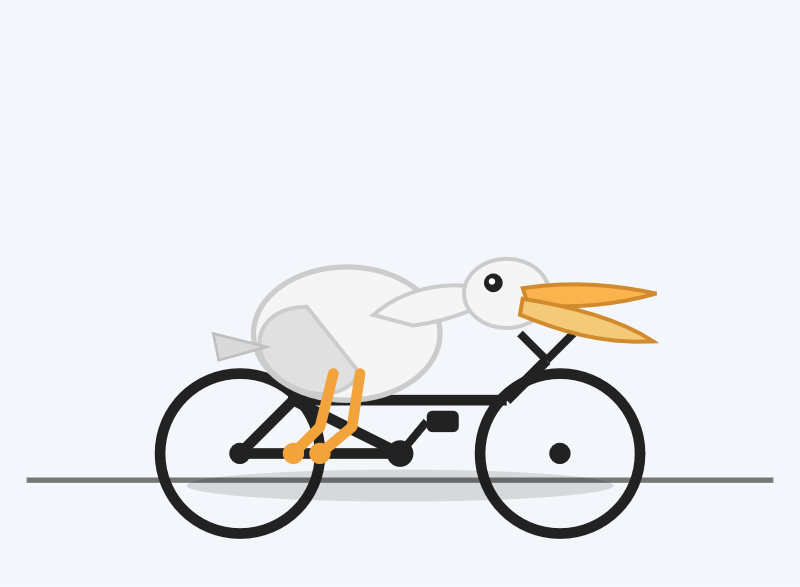
And this one with reasoning effort set to high:

These actually feel like a regression from GPT-5 to me. The bicycles have less spokes!
Reverse engineering Codex CLI to get GPT-5-Codex-Mini to draw me a pelican
OpenAI partially released a new model yesterday called GPT-5-Codex-Mini, which they describe as "a more compact and cost-efficient version of GPT-5-Codex". It’s currently only available via their Codex CLI tool and VS Code extension, with proper API access "coming soon". I decided to use Codex to reverse engineer the Codex CLI tool and give me the ability to prompt the new model directly.
[... 1,774 words]Kimi K2 Thinking. Chinese AI lab Moonshot's Kimi K2 established itself as one of the largest open weight models - 1 trillion parameters - back in July. They've now released the Thinking version, also a trillion parameters (MoE, 32B active) and also under their custom modified (so not quite open source) MIT license.
Starting with Kimi K2, we built it as a thinking agent that reasons step-by-step while dynamically invoking tools. It sets a new state-of-the-art on Humanity's Last Exam (HLE), BrowseComp, and other benchmarks by dramatically scaling multi-step reasoning depth and maintaining stable tool-use across 200–300 sequential calls. At the same time, K2 Thinking is a native INT4 quantization model with 256k context window, achieving lossless reductions in inference latency and GPU memory usage.
This one is only 594GB on Hugging Face - Kimi K2 was 1.03TB - which I think is due to the new INT4 quantization. This makes the model both cheaper and faster to host.
So far the only people hosting it are Moonshot themselves. I tried it out both via their own API and via the OpenRouter proxy to it, via the llm-moonshot plugin (by NickMystic) and my llm-openrouter plugin respectively.
The buzz around this model so far is very positive. Could this be the first open weight model that's competitive with the latest from OpenAI and Anthropic, especially for long-running agentic tool call sequences?
Moonshot AI's self-reported benchmark scores show K2 Thinking beating the top OpenAI and Anthropic models (GPT-5 and Sonnet 4.5 Thinking) at "Agentic Reasoning" and "Agentic Search" but not quite top for "Coding":
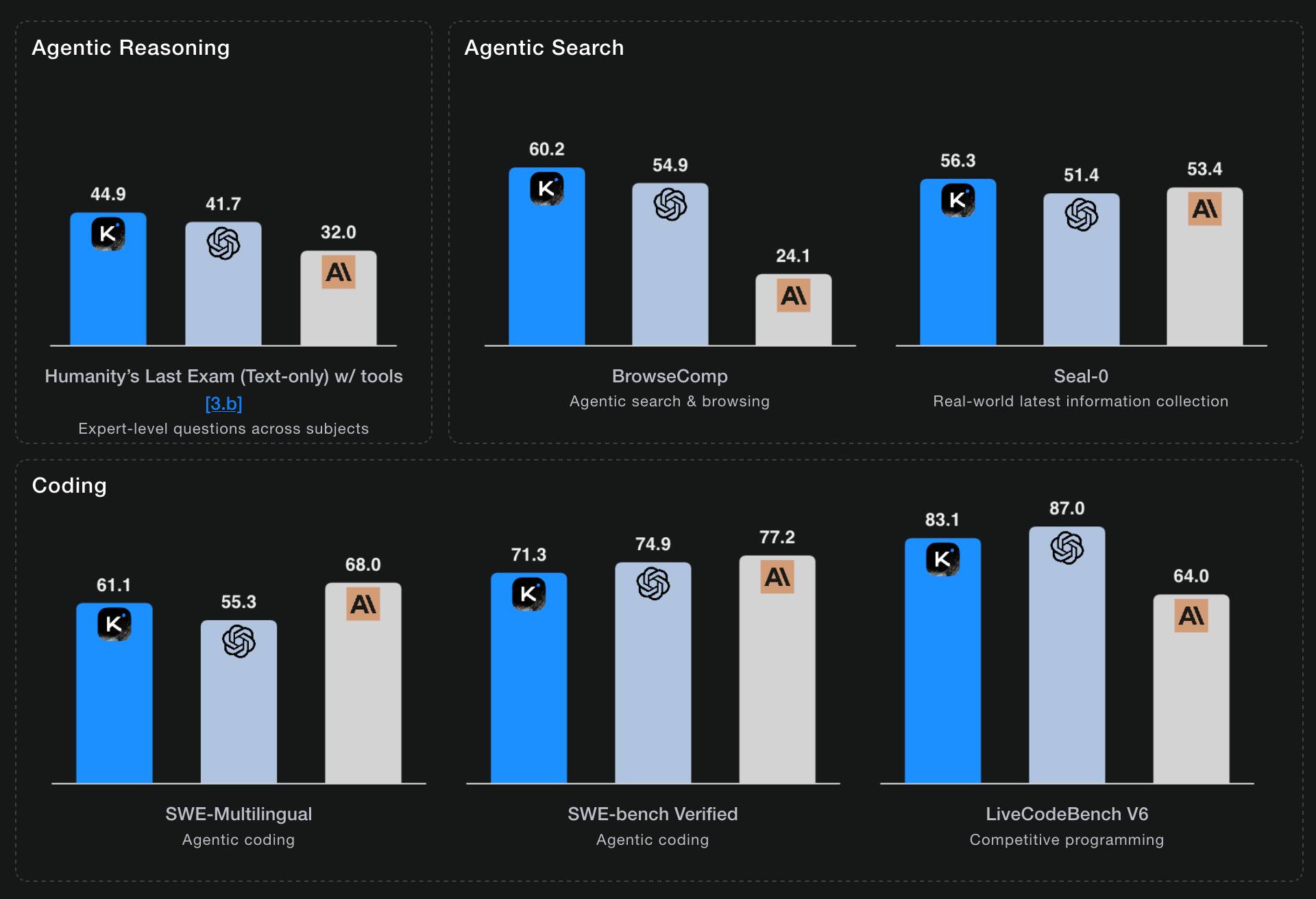
I ran a couple of pelican tests:
llm install llm-moonshot
llm keys set moonshot # paste key
llm -m moonshot/kimi-k2-thinking 'Generate an SVG of a pelican riding a bicycle'

llm install llm-openrouter
llm keys set openrouter # paste key
llm -m openrouter/moonshotai/kimi-k2-thinking \
'Generate an SVG of a pelican riding a bicycle'
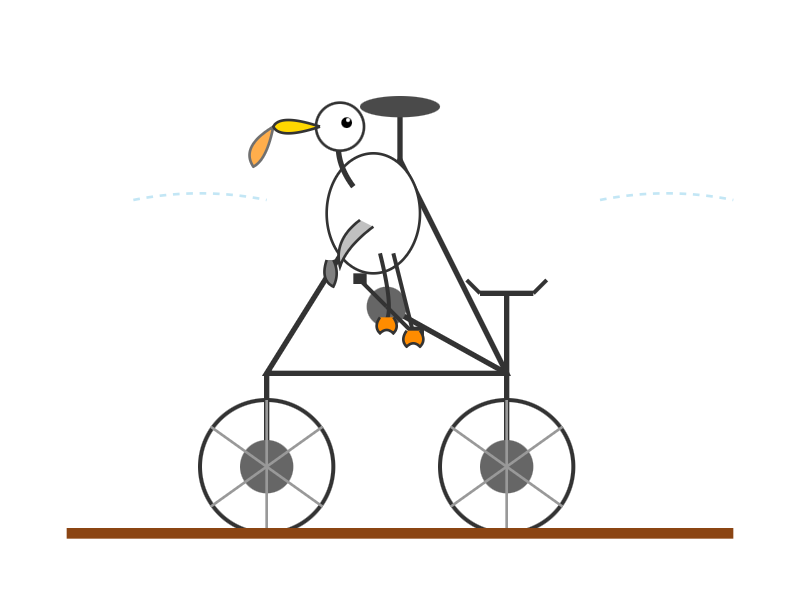
Artificial Analysis said:
Kimi K2 Thinking achieves 93% in 𝜏²-Bench Telecom, an agentic tool use benchmark where the model acts as a customer service agent. This is the highest score we have independently measured. Tool use in long horizon agentic contexts was a strength of Kimi K2 Instruct and it appears this new Thinking variant makes substantial gains
CNBC quoted a source who provided the training price for the model:
The Kimi K2 Thinking model cost $4.6 million to train, according to a source familiar with the matter. [...] CNBC was unable to independently verify the DeepSeek or Kimi figures.
MLX developer Awni Hannun got it working on two 512GB M3 Ultra Mac Studios:
The new 1 Trillion parameter Kimi K2 Thinking model runs well on 2 M3 Ultras in its native format - no loss in quality!
The model was quantization aware trained (qat) at int4.
Here it generated ~3500 tokens at 15 toks/sec using pipeline-parallelism in mlx-lm
Here's the 658GB mlx-community model.
Introducing SWE-1.5: Our Fast Agent Model (via) Here's the second fast coding model released by a coding agent IDE in the same day - the first was Composer-1 by Cursor. This time it's Windsurf releasing SWE-1.5:
Today we’re releasing SWE-1.5, the latest in our family of models optimized for software engineering. It is a frontier-size model with hundreds of billions of parameters that achieves near-SOTA coding performance. It also sets a new standard for speed: we partnered with Cerebras to serve it at up to 950 tok/s – 6x faster than Haiku 4.5 and 13x faster than Sonnet 4.5.
Like Composer-1 it's only available via their editor, no separate API yet. Also like Composer-1 they don't appear willing to share details of the "leading open-source base model" they based their new model on.
I asked it to generate an SVG of a pelican riding a bicycle and got this:

This one felt really fast. Partnering with Cerebras for inference is a very smart move.
They share a lot of details about their training process in the post:
SWE-1.5 is trained on our state-of-the-art cluster of thousands of GB200 NVL72 chips. We believe SWE-1.5 may be the first public production model trained on the new GB200 generation. [...]
Our RL rollouts require high-fidelity environments with code execution and even web browsing. To achieve this, we leveraged our VM hypervisor
otterlinkthat allows us to scale Devin to tens of thousands of concurrent machines (learn more about blockdiff). This enabled us to smoothly support very high concurrency and ensure the training environment is aligned with our Devin production environments.
That's another similarity to Cursor's Composer-1! Cursor talked about how they ran "hundreds of thousands of concurrent sandboxed coding environments in the cloud" in their description of their RL training as well.
This is a notable trend: if you want to build a really great agentic coding tool there's clearly a lot to be said for using reinforcement learning to fine-tune a model against your own custom set of tools using large numbers of sandboxed simulated coding environments as part of that process.
Update: I think it's built on GLM.
MiniMax M2 & Agent: Ingenious in Simplicity. MiniMax M2 was released on Monday 27th October by MiniMax, a Chinese AI lab founded in December 2021.
It's a very promising model. Their self-reported benchmark scores show it as comparable to Claude Sonnet 4, and Artificial Analysis are ranking it as the best currently available open weight model according to their intelligence score:
MiniMax’s M2 achieves a new all-time-high Intelligence Index score for an open weights model and offers impressive efficiency with only 10B active parameters (200B total). [...]
The model’s strengths include tool use and instruction following (as shown by Tau2 Bench and IFBench). As such, while M2 likely excels at agentic use cases it may underperform other open weights leaders such as DeepSeek V3.2 and Qwen3 235B at some generalist tasks. This is in line with a number of recent open weights model releases from Chinese AI labs which focus on agentic capabilities, likely pointing to a heavy post-training emphasis on RL.
The size is particularly significant: the model weights are 230GB on Hugging Face, significantly smaller than other high performing open weight models. That's small enough to run on a 256GB Mac Studio, and the MLX community have that working already.
MiniMax offer their own API, and recommend using their Anthropic-compatible endpoint and the official Anthropic SDKs to access it. MiniMax Head of Engineering Skyler Miao provided some background on that:
M2 is a agentic thinking model, it do interleaved thinking like sonnet 4.5, which means every response will contain its thought content. Its very important for M2 to keep the chain of thought. So we must make sure the history thought passed back to the model. Anthropic API support it for sure, as sonnet needs it as well. OpenAI only support it in their new Response API, no support for in ChatCompletion.
MiniMax are offering the new model via their API for free until November 7th, after which the cost will be $0.30/million input tokens and $1.20/million output tokens - similar in price to Gemini 2.5 Flash and GPT-5 Mini, see price comparison here on my llm-prices.com site.
I released a new plugin for LLM called llm-minimax providing support for M2 via the MiniMax API:
llm install llm-minimax
llm keys set minimax
# Paste key here
llm -m m2 -o max_tokens 10000 "Generate an SVG of a pelican riding a bicycle"
Here's the result:

51 input, 4,017 output. At $0.30/m input and $1.20/m output that pelican would cost 0.4836 cents - less than half a cent.
This is the first plugin I've written for an Anthropic-API-compatible model. I released llm-anthropic 0.21 first adding the ability to customize the base_url parameter when using that model class. This meant the new plugin was less than 30 lines of Python.
Composer: Building a fast frontier model with RL (via) Cursor released Cursor 2.0 today, with a refreshed UI focused on agentic coding (and running agents in parallel) and a new model that's unique to Cursor called Composer 1.
As far as I can tell there's no way to call the model directly via an API, so I fired up "Ask" mode in Cursor's chat side panel and asked it to "Generate an SVG of a pelican riding a bicycle":
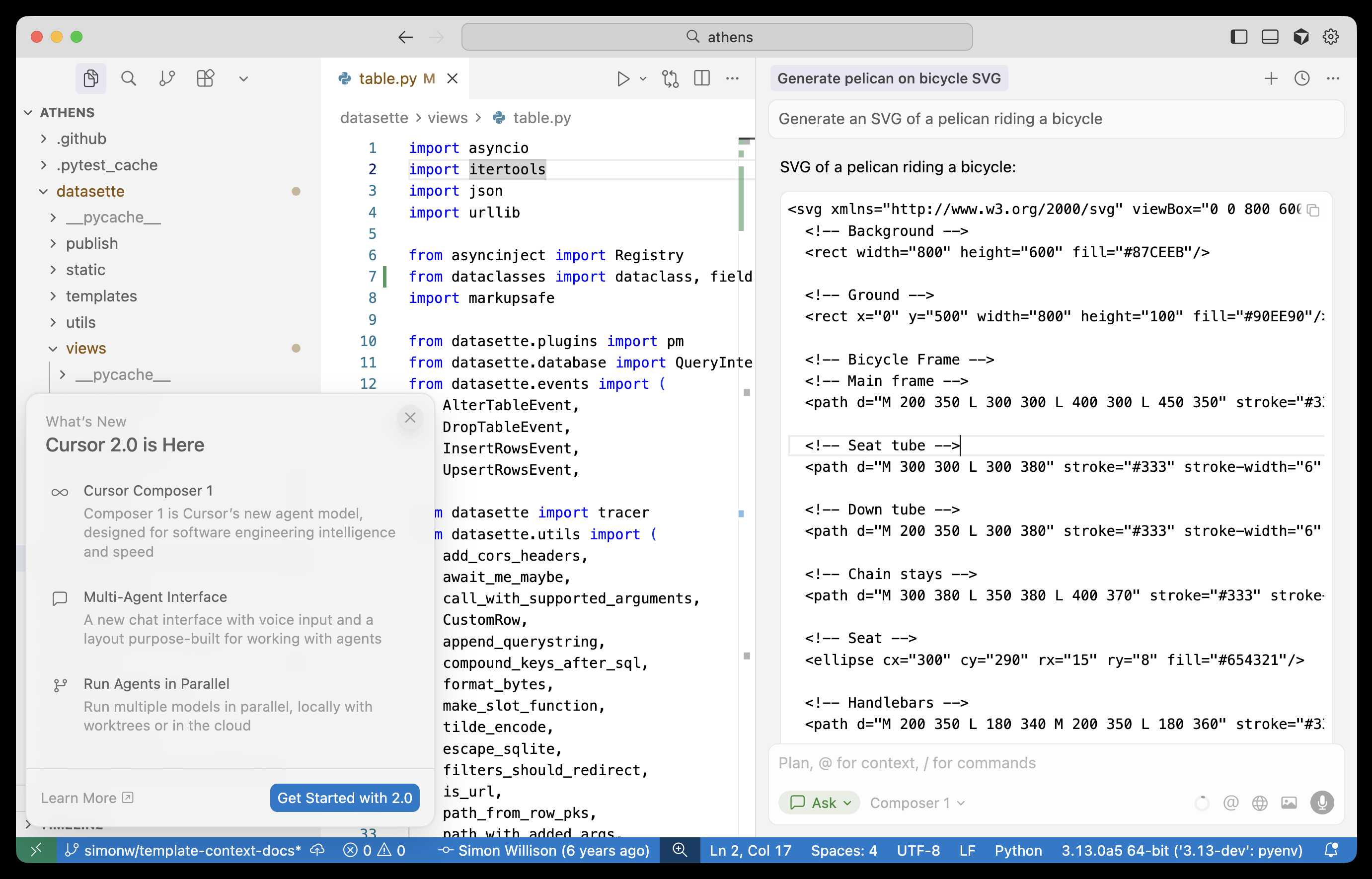
Here's the result:

The notable thing about Composer-1 is that it is designed to be fast. The pelican certainly came back quickly, and in their announcement they describe it as being "4x faster than similarly intelligent models".
It's interesting to see Cursor investing resources in training their own code-specific model - similar to GPT-5-Codex or Qwen3-Coder. From their post:
Composer is a mixture-of-experts (MoE) language model supporting long-context generation and understanding. It is specialized for software engineering through reinforcement learning (RL) in a diverse range of development environments. [...]
Efficient training of large MoE models requires significant investment into building infrastructure and systems research. We built custom training infrastructure leveraging PyTorch and Ray to power asynchronous reinforcement learning at scale. We natively train our models at low precision by combining our MXFP8 MoE kernels with expert parallelism and hybrid sharded data parallelism, allowing us to scale training to thousands of NVIDIA GPUs with minimal communication cost. [...]
During RL, we want our model to be able to call any tool in the Cursor Agent harness. These tools allow editing code, using semantic search, grepping strings, and running terminal commands. At our scale, teaching the model to effectively call these tools requires running hundreds of thousands of concurrent sandboxed coding environments in the cloud.
One detail that's notably absent from their description: did they train the model from scratch, or did they start with an existing open-weights model such as something from Qwen or GLM?
Cursor researcher Sasha Rush has been answering questions on Hacker News, but has so far been evasive in answering questions about the base model. When directly asked "is Composer a fine tune of an existing open source base model?" they replied:
Our primary focus is on RL post-training. We think that is the best way to get the model to be a strong interactive agent.
Sasha did confirm that rumors of an earlier Cursor preview model, Cheetah, being based on a model by xAI's Grok were "Straight up untrue."
Getting DeepSeek-OCR working on an NVIDIA Spark via brute force using Claude Code
DeepSeek released a new model yesterday: DeepSeek-OCR, a 6.6GB model fine-tuned specifically for OCR. They released it as model weights that run using PyTorch and CUDA. I got it running on the NVIDIA Spark by having Claude Code effectively brute force the challenge of getting it working on that particular hardware.
[... 1,971 words]Introducing Claude Haiku 4.5 (via) Anthropic released Claude Haiku 4.5 today, the cheapest member of the Claude 4.5 family that started with Sonnet 4.5 a couple of weeks ago.
It's priced at $1/million input tokens and $5/million output tokens, slightly more expensive than Haiku 3.5 ($0.80/$4) and a lot more expensive than the original Claude 3 Haiku ($0.25/$1.25), both of which remain available at those prices.
It's a third of the price of Sonnet 4 and Sonnet 4.5 (both $3/$15) which is notable because Anthropic's benchmarks put it in a similar space to that older Sonnet 4 model. As they put it:
What was recently at the frontier is now cheaper and faster. Five months ago, Claude Sonnet 4 was a state-of-the-art model. Today, Claude Haiku 4.5 gives you similar levels of coding performance but at one-third the cost and more than twice the speed.
I've been hoping to see Anthropic release a fast, inexpensive model that's price competitive with the cheapest models from OpenAI and Gemini, currently $0.05/$0.40 (GPT-5-Nano) and $0.075/$0.30 (Gemini 2.0 Flash Lite). Haiku 4.5 certainly isn't that, it looks like they're continuing to focus squarely on the "great at code" part of the market.
The new Haiku is the first Haiku model to support reasoning. It sports a 200,000 token context window, 64,000 maximum output (up from just 8,192 for Haiku 3.5) and a "reliable knowledge cutoff" of February 2025, one month later than the January 2025 date for Sonnet 4 and 4.5 and Opus 4 and 4.1.
Something that caught my eye in the accompanying system card was this note about context length:
For Claude Haiku 4.5, we trained the model to be explicitly context-aware, with precise information about how much context-window has been used. This has two effects: the model learns when and how to wrap up its answer when the limit is approaching, and the model learns to continue reasoning more persistently when the limit is further away. We found this intervention—along with others—to be effective at limiting agentic “laziness” (the phenomenon where models stop working on a problem prematurely, give incomplete answers, or cut corners on tasks).
I've added the new price to llm-prices.com, released llm-anthropic 0.20 with the new model and updated my Haiku-from-your-webcam demo (source) to use Haiku 4.5 as well.
Here's llm -m claude-haiku-4.5 'Generate an SVG of a pelican riding a bicycle' (transcript).

18 input tokens and 1513 output tokens = 0.7583 cents.
GPT-5 pro. Here's OpenAI's model documentation for their GPT-5 pro model, released to their API today at their DevDay event.
It has similar base characteristics to GPT-5: both share a September 30, 2024 knowledge cutoff and 400,000 context limit.
GPT-5 pro has maximum output tokens 272,000 max, an increase from 128,000 for GPT-5.
As our most advanced reasoning model, GPT-5 pro defaults to (and only supports)
reasoning.effort: high
It's only available via OpenAI's Responses API. My LLM tool doesn't support that in core yet, but the llm-openai-plugin plugin does. I released llm-openai-plugin 0.7 adding support for the new model, then ran this:
llm install -U llm-openai-plugin
llm -m openai/gpt-5-pro "Generate an SVG of a pelican riding a bicycle"
It's very, very slow. The model took 6 minutes 8 seconds to respond and charged me for 16 input and 9,205 output tokens. At $15/million input and $120/million output this pelican cost me $1.10!

Here's the full transcript. It looks visually pretty simpler to the much, much cheaper result I got from GPT-5.
Two new models from Chinese AI labs in the past few days. I tried them both out using llm-openrouter:
DeepSeek-V3.2-Exp from DeepSeek. Announcement, Tech Report, Hugging Face (690GB, MIT license).
As an intermediate step toward our next-generation architecture, V3.2-Exp builds upon V3.1-Terminus by introducing DeepSeek Sparse Attention—a sparse attention mechanism designed to explore and validate optimizations for training and inference efficiency in long-context scenarios.
This one felt very slow when I accessed it via OpenRouter - I probably got routed to one of the slower providers. Here's the pelican:
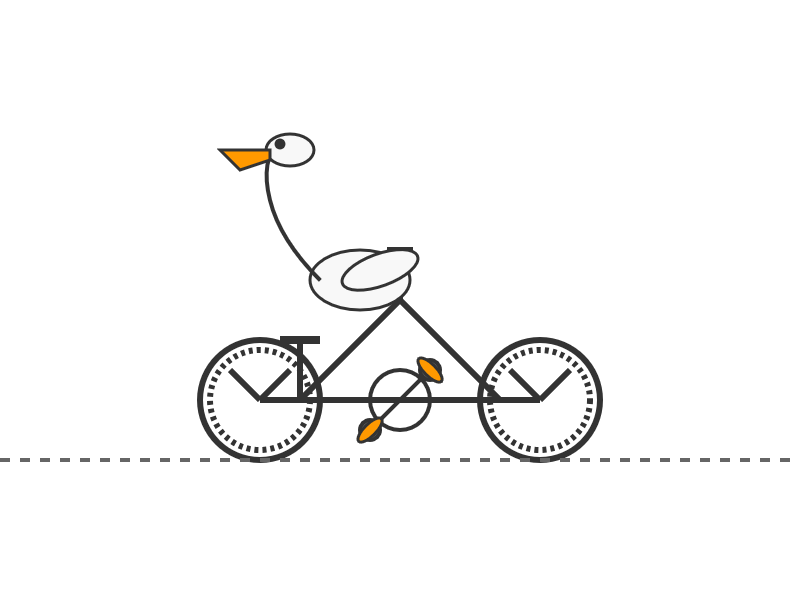
GLM-4.6 from Z.ai. Announcement, Hugging Face (714GB, MIT license).
The context window has been expanded from 128K to 200K tokens [...] higher scores on code benchmarks [...] GLM-4.6 exhibits stronger performance in tool using and search-based agents.
Here's the pelican for that:

Claude Sonnet 4.5 is probably the “best coding model in the world” (at least for now)
Anthropic released Claude Sonnet 4.5 today, with a very bold set of claims:
[... 1,205 words]Improved Gemini 2.5 Flash and Flash-Lite (via) Two new preview models from Google - updates to their fast and inexpensive Flash and Flash Lite families:
The latest version of Gemini 2.5 Flash-Lite was trained and built based on three key themes:
- Better instruction following: The model is significantly better at following complex instructions and system prompts.
- Reduced verbosity: It now produces more concise answers, a key factor in reducing token costs and latency for high-throughput applications (see charts above).
- Stronger multimodal & translation capabilities: This update features more accurate audio transcription, better image understanding, and improved translation quality.
[...]
This latest 2.5 Flash model comes with improvements in two key areas we heard consistent feedback on:
- Better agentic tool use: We've improved how the model uses tools, leading to better performance in more complex, agentic and multi-step applications. This model shows noticeable improvements on key agentic benchmarks, including a 5% gain on SWE-Bench Verified, compared to our last release (48.9% → 54%).
- More efficient: With thinking on, the model is now significantly more cost-efficient—achieving higher quality outputs while using fewer tokens, reducing latency and cost (see charts above).
They also added two new convenience model IDs: gemini-flash-latest and gemini-flash-lite-latest, which will always resolve to the most recent model in that family.
I released llm-gemini 0.26 adding support for the new models and new aliases. I also used the response.set_resolved_model() method added in LLM 0.27 to ensure that the correct model ID would be recorded for those -latest uses.
llm install -U llm-gemini
Both of these models support optional reasoning tokens. I had them draw me pelicans riding bicycles in both thinking and non-thinking mode, using commands that looked like this:
llm -m gemini-2.5-flash-preview-09-2025 -o thinking_budget 4000 "Generate an SVG of a pelican riding a bicycle"
I then got each model to describe the image it had drawn using commands like this:
llm -a https://static.simonwillison.net/static/2025/gemini-2.5-flash-preview-09-2025-thinking.png -m gemini-2.5-flash-preview-09-2025 -o thinking_budget 2000 'Detailed single line alt text for this image'
gemini-2.5-flash-preview-09-2025-thinking

A minimalist stick figure graphic depicts a person with a white oval body and a dot head cycling a gray bicycle, carrying a large, bright yellow rectangular box resting high on their back.
gemini-2.5-flash-preview-09-2025
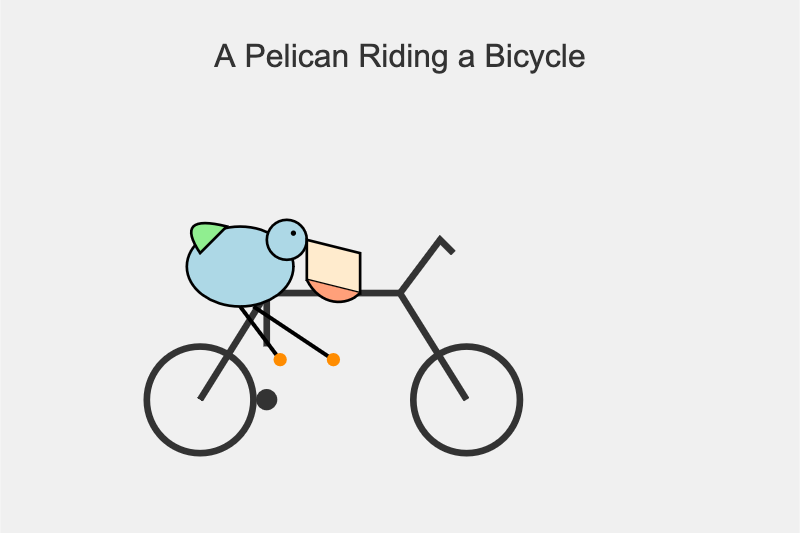
A simple cartoon drawing of a pelican riding a bicycle, with the text "A Pelican Riding a Bicycle" above it.
gemini-2.5-flash-lite-preview-09-2025-thinking

A quirky, simplified cartoon illustration of a white bird with a round body, black eye, and bright yellow beak, sitting astride a dark gray, two-wheeled vehicle with its peach-colored feet dangling below.
gemini-2.5-flash-lite-preview-09-2025

A minimalist, side-profile illustration of a stylized yellow chick or bird character riding a dark-wheeled vehicle on a green strip against a white background.
Artificial Analysis posted a detailed review, including these interesting notes about reasoning efficiency and speed:
- In reasoning mode, Gemini 2.5 Flash and Flash-Lite Preview 09-2025 are more token-efficient, using fewer output tokens than their predecessors to run the Artificial Analysis Intelligence Index. Gemini 2.5 Flash-Lite Preview 09-2025 uses 50% fewer output tokens than its predecessor, while Gemini 2.5 Flash Preview 09-2025 uses 24% fewer output tokens.
- Google Gemini 2.5 Flash-Lite Preview 09-2025 (Reasoning) is ~40% faster than the prior July release, delivering ~887 output tokens/s on Google AI Studio in our API endpoint performance benchmarking. This makes the new Gemini 2.5 Flash-Lite the fastest proprietary model we have benchmarked on the Artificial Analysis website
GPT-5-Codex. OpenAI half-released this model earlier this month, adding it to their Codex CLI tool but not their API.
Today they've fixed that - the new model can now be accessed as gpt-5-codex. It's priced the same as regular GPT-5: $1.25/million input tokens, $10/million output tokens, and the same hefty 90% discount for previously cached input tokens, especially important for agentic tool-using workflows which quickly produce a lengthy conversation.
It's only available via their Responses API, which means you currently need to install the llm-openai-plugin to use it with LLM:
llm install -U llm-openai-plugin
llm -m openai/gpt-5-codex -T llm_version 'What is the LLM version?'
Outputs:
The installed LLM version is 0.27.1.
I added tool support to that plugin today, mostly authored by GPT-5 Codex itself using OpenAI's Codex CLI.
The new prompting guide for GPT-5-Codex is worth a read.
GPT-5-Codex is purpose-built for Codex CLI, the Codex IDE extension, the Codex cloud environment, and working in GitHub, and also supports versatile tool use. We recommend using GPT-5-Codex only for agentic and interactive coding use cases.
Because the model is trained specifically for coding, many best practices you once had to prompt into general purpose models are built in, and over prompting can reduce quality.
The core prompting principle for GPT-5-Codex is “less is more.”
I tried my pelican benchmark at a cost of 2.156 cents.
llm -m openai/gpt-5-codex "Generate an SVG of a pelican riding a bicycle"

I asked Codex to describe this image and it correctly identified it as a pelican!
llm -m openai/gpt-5-codex -a https://static.simonwillison.net/static/2025/gpt-5-codex-api-pelican.png \
-s 'Write very detailed alt text'
Cartoon illustration of a cream-colored pelican with a large orange beak and tiny black eye riding a minimalist dark-blue bicycle. The bird’s wings are tucked in, its legs resemble orange stick limbs pushing the pedals, and its tail feathers trail behind with light blue motion streaks to suggest speed. A small coral-red tongue sticks out of the pelican’s beak. The bicycle has thin light gray spokes, and the background is a simple pale blue gradient with faint curved lines hinting at ground and sky.
Qwen3-VL: Sharper Vision, Deeper Thought, Broader Action (via) I've been looking forward to this. Qwen 2.5 VL is one of the best available open weight vision LLMs, so I had high hopes for Qwen 3's vision models.
Firstly, we are open-sourcing the flagship model of this series: Qwen3-VL-235B-A22B, available in both Instruct and Thinking versions. The Instruct version matches or even exceeds Gemini 2.5 Pro in major visual perception benchmarks. The Thinking version achieves state-of-the-art results across many multimodal reasoning benchmarks.
Bold claims against Gemini 2.5 Pro, which are supported by a flurry of self-reported benchmarks.
This initial model is enormous. On Hugging Face both Qwen3-VL-235B-A22B-Instruct and Qwen3-VL-235B-A22B-Thinking are 235B parameters and weigh 471 GB. Not something I'm going to be able to run on my 64GB Mac!
The Qwen 2.5 VL family included models at 72B, 32B, 7B and 3B sizes. Given the rate Qwen are shipping models at the moment I wouldn't be surprised to see smaller Qwen 3 VL models show up in just the next few days.
Also from Qwen today, three new API-only closed-weight models: upgraded Qwen 3 Coder, Qwen3-LiveTranslate-Flash (real-time multimodal interpretation), and Qwen3-Max, their new trillion parameter flagship model, which they describe as their "largest and most capable model to date".
Plus Qwen3Guard, a "safety moderation model series" that looks similar in purpose to Meta's Llama Guard. This one is open weights (Apache 2.0) and comes in 8B, 4B and 0.6B sizes on Hugging Face. There's more information in the QwenLM/Qwen3Guard GitHub repo.
It's been an extremely busy day for team Qwen. Within the last 24 hours (all links to Twitter, which seems to be their preferred platform for these announcements):
- Qwen3-Next-80B-A3B-Instruct-FP8 and Qwen3-Next-80B-A3B-Thinking-FP8 - official FP8 quantized versions of their Qwen3-Next models. On Hugging Face Qwen3-Next-80B-A3B-Instruct is 163GB and Qwen3-Next-80B-A3B-Instruct-FP8 is 82.1GB. I wrote about Qwen3-Next on Friday 12th September.
- Qwen3-TTS-Flash provides "multi-timbre, multi-lingual, and multi-dialect speech synthesis" according to their blog announcement. It's not available as open weights, you have to access it via their API instead. Here's a free live demo.
- Qwen3-Omni is today's most exciting announcement: a brand new 30B parameter "omni" model supporting text, audio and video input and text and audio output! You can try it on chat.qwen.ai by selecting the "Use voice and video chat" icon - you'll need to be signed in using Google or GitHub. This one is open weights, as Apache 2.0 Qwen3-Omni-30B-A3B-Instruct, Qwen/Qwen3-Omni-30B-A3B-Thinking, and Qwen3-Omni-30B-A3B-Captioner on HuggingFace. That Instruct model is 70.5GB so this should be relatively accessible for running on expensive home devices.
- Qwen-Image-Edit-2509 is an updated version of their excellent Qwen-Image-Edit model which I first tried last month. Their blog post calls it "the monthly iteration of Qwen-Image-Edit" so I guess they're planning more frequent updates. The new model adds multi-image inputs. I used it via chat.qwen.ai to turn a photo of our dog into a dragon in the style of one of Natalie's ceramic pots.

Here's the prompt I used, feeding in two separate images. Weirdly it used the edges of the landscape photo to fill in the gaps on the otherwise portrait output. It turned the chair seat into a bowl too!
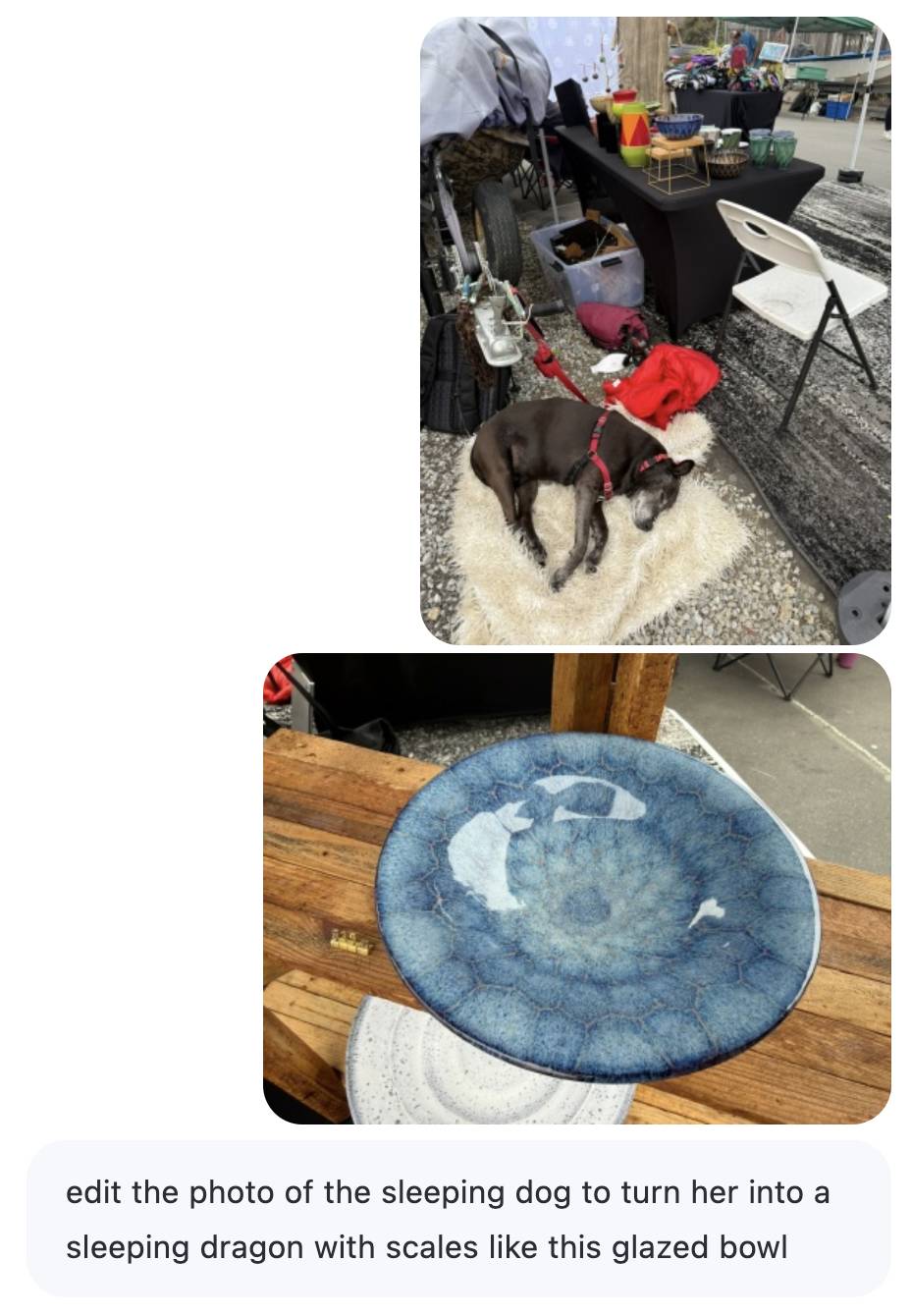
Grok 4 Fast. New hosted vision-enabled reasoning model from xAI that's designed to be fast and extremely competitive on price. It has a 2 million token context window and "was trained end-to-end with tool-use reinforcement learning".
It's priced at $0.20/million input tokens and $0.50/million output tokens - 15x less than Grok 4 (which is $3/million input and $15/million output). That puts it cheaper than GPT-5 mini and Gemini 2.5 Flash on llm-prices.com.
The same model weights handle reasoning and non-reasoning based on a parameter passed to the model.
I've been trying it out via my updated llm-openrouter plugin, since Grok 4 Fast is available for free on OpenRouter for a limited period.
Here's output from the non-reasoning model. This actually output an invalid SVG - I had to make a tiny manual tweak to the XML to get it to render.
llm -m openrouter/x-ai/grok-4-fast:free "Generate an SVG of a pelican riding a bicycle" -o reasoning_enabled false
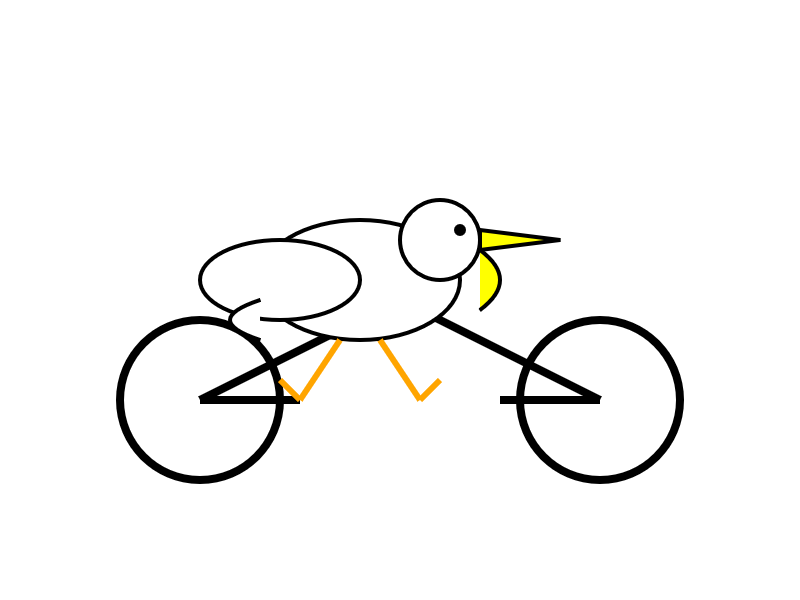
(I initially ran this without that -o reasoning_enabled false flag, but then I saw that OpenRouter enable reasoning by default for that model. Here's my previous invalid result.)
And the reasoning model:
llm -m openrouter/x-ai/grok-4-fast:free "Generate an SVG of a pelican riding a bicycle" -o reasoning_enabled true

In related news, the New York Times had a story a couple of days ago about Elon's recent focus on xAI: Since Leaving Washington, Elon Musk Has Been All In on His A.I. Company.
Mistral quietly released two new models yesterday: Magistral Small 1.2 (Apache 2.0, 96.1 GB on Hugging Face) and Magistral Medium 1.2 (not open weights same as Mistral's other "medium" models.)
Despite being described as "minor updates" to the Magistral 1.1 models these have one very notable improvement:
- Multimodality: Now equipped with a vision encoder, these models handle both text and images seamlessly.
Magistral is Mistral's reasoning model, so we now have a new reasoning vision LLM.
The other features from the tiny announcement on Twitter:
- Performance Boost: 15% improvements on math and coding benchmarks such as AIME 24/25 and LiveCodeBench v5/v6.
- Smarter Tool Use: Better tool usage with web search, code interpreter, and image generation.
- Better Tone & Persona: Responses are clearer, more natural, and better formatted for you.
GPT‑5-Codex and upgrades to Codex. OpenAI half-released a new model today: GPT‑5-Codex, a fine-tuned GPT-5 variant explicitly designed for their various AI-assisted programming tools.
Update: OpenAI call it a "version of GPT-5", they don't explicitly describe it as a fine-tuned model. Calling it a fine-tune was my mistake here.
I say half-released because it's not yet available via their API, but they "plan to make GPT‑5-Codex available in the API soon".
I wrote about the confusing array of OpenAI products that share the name Codex a few months ago. This new model adds yet another, though at least "GPT-5-Codex" (using two hyphens) is unambiguous enough not to add to much more to the confusion.
At this point it's best to think of Codex as OpenAI's brand name for their coding family of models and tools.
The new model is already integrated into their VS Code extension, the Codex CLI and their Codex Cloud asynchronous coding agent. I'd been calling that last one "Codex Web" but I think Codex Cloud is a better name since it can also be accessed directly from their iPhone app.
Codex Cloud also has a new feature: you can configure it to automatically run code review against specific GitHub repositories (I found that option on chatgpt.com/codex/settings/code-review) and it will create a temporary container to use as part of those reviews. Here's the relevant documentation.
Some documented features of the new GPT-5-Codex model:
- Specifically trained for code review, which directly supports their new code review feature.
- "GPT‑5-Codex adapts how much time it spends thinking more dynamically based on the complexity of the task." Simple tasks (like "list files in this directory") should run faster. Large, complex tasks should use run for much longer - OpenAI report Codex crunching for seven hours in some cases!
- Increased score on their proprietary "code refactoring evaluation" from 33.9% for GPT-5 (high) to 51.3% for GPT-5-Codex (high). It's hard to evaluate this without seeing the details of the eval but it does at least illustrate that refactoring performance is something they've focused on here.
- "GPT‑5-Codex also shows significant improvements in human preference evaluations when creating mobile websites" - in the past I've habitually prompted models to "make it mobile-friendly", maybe I don't need to do that any more.
- "We find that comments by GPT‑5-Codex are less likely to be incorrect or unimportant" - I originally misinterpreted this as referring to comments in code but it's actually about comments left on code reviews.
The system prompt for GPT-5-Codex in Codex CLI is worth a read. It's notably shorter than the system prompt for other models - here's a diff.
Here's the section of the updated system prompt that talks about comments:
Add succinct code comments that explain what is going on if code is not self-explanatory. You should not add comments like "Assigns the value to the variable", but a brief comment might be useful ahead of a complex code block that the user would otherwise have to spend time parsing out. Usage of these comments should be rare.
Theo Browne has a video review of the model and accompanying features. He was generally impressed but noted that it was surprisingly bad at using the Codex CLI search tool to navigate code. Hopefully that's something that can fix with a system prompt update.
Finally, can it drew a pelican riding a bicycle? Without API access I instead got Codex Cloud to have a go by prompting:
Generate an SVG of a pelican riding a bicycle, save as pelican.svg
Here's the result:

Qwen3-Next-80B-A3B. Qwen announced two new models via their Twitter account (and here's their blog): Qwen3-Next-80B-A3B-Instruct and Qwen3-Next-80B-A3B-Thinking.
They make some big claims on performance:
- Qwen3-Next-80B-A3B-Instruct approaches our 235B flagship.
- Qwen3-Next-80B-A3B-Thinking outperforms Gemini-2.5-Flash-Thinking.
The name "80B-A3B" indicates 80 billion parameters of which only 3 billion are active at a time. You still need to have enough GPU-accessible RAM to hold all 80 billion in memory at once but only 3 billion will be used for each round of inference, which provides a significant speedup in responding to prompts.
More details from their tweet:
- 80B params, but only 3B activated per token → 10x cheaper training, 10x faster inference than Qwen3-32B.(esp. @ 32K+ context!)
- Hybrid Architecture: Gated DeltaNet + Gated Attention → best of speed & recall
- Ultra-sparse MoE: 512 experts, 10 routed + 1 shared
- Multi-Token Prediction → turbo-charged speculative decoding
- Beats Qwen3-32B in perf, rivals Qwen3-235B in reasoning & long-context
The models on Hugging Face are around 150GB each so I decided to try them out via OpenRouter rather than on my own laptop (Thinking, Instruct).
I'm used my llm-openrouter plugin. I installed it like this:
llm install llm-openrouter
llm keys set openrouter
# paste key here
Then found the model IDs with this command:
llm models -q next
Which output:
OpenRouter: openrouter/qwen/qwen3-next-80b-a3b-thinking
OpenRouter: openrouter/qwen/qwen3-next-80b-a3b-instruct
I have an LLM prompt template saved called pelican-svg which I created like this:
llm "Generate an SVG of a pelican riding a bicycle" --save pelican-svg
This means I can run my pelican benchmark like this:
llm -t pelican-svg -m openrouter/qwen/qwen3-next-80b-a3b-thinking
Or like this:
llm -t pelican-svg -m openrouter/qwen/qwen3-next-80b-a3b-instruct
Here's the thinking model output (exported with llm logs -c | pbcopy after I ran the prompt):
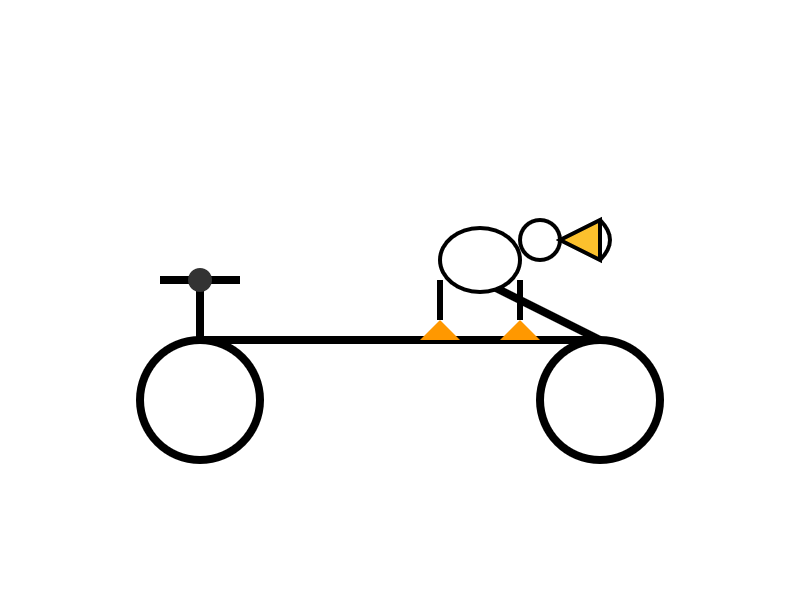
I enjoyed the "Whimsical style with smooth curves and friendly proportions (no anatomical accuracy needed for bicycle riding!)" note in the transcript.
The instruct (non-reasoning) model gave me this:

"🐧🦩 Who needs legs!?" indeed! I like that penguin-flamingo emoji sequence it's decided on for pelicans.
Kimi-K2-Instruct-0905. New not-quite-MIT licensed model from Chinese Moonshot AI, a follow-up to the highly regarded Kimi-K2 model they released in July.
This one is an incremental improvement - I've seen it referred to online as "Kimi K-2.1". It scores a little higher on a bunch of popular coding benchmarks, reflecting Moonshot's claim that it "demonstrates significant improvements in performance on public benchmarks and real-world coding agent tasks".
More importantly the context window size has been increased from 128,000 to 256,000 tokens.
Like its predecessor this is a big model - 1 trillion parameters in a mixture-of-experts configuration with 384 experts, 32B activated parameters and 8 selected experts per token.
I used Groq's playground tool to try "Generate an SVG of a pelican riding a bicycle" and got this result, at a very healthy 445 tokens/second taking just under 2 seconds total:



